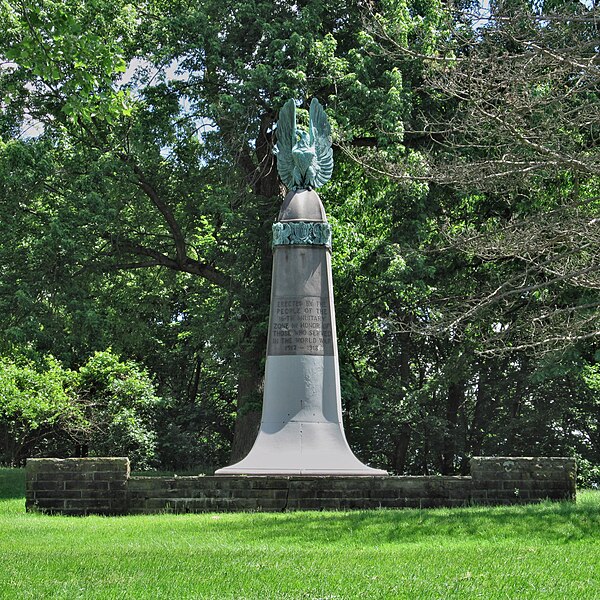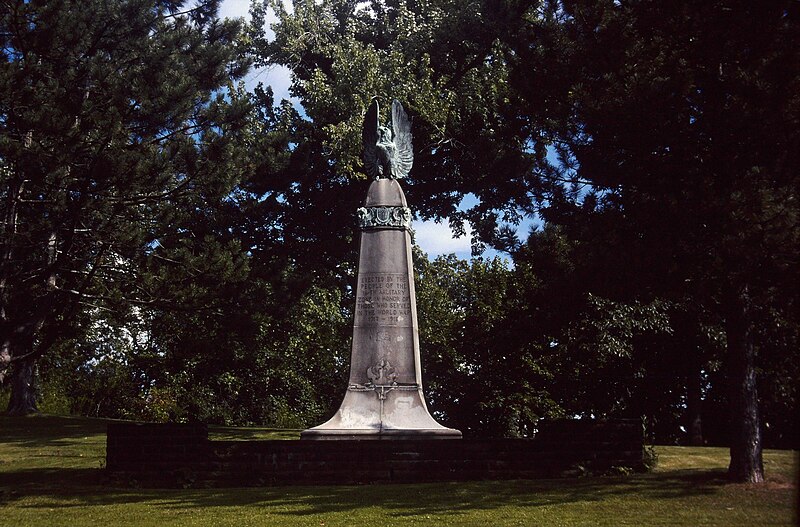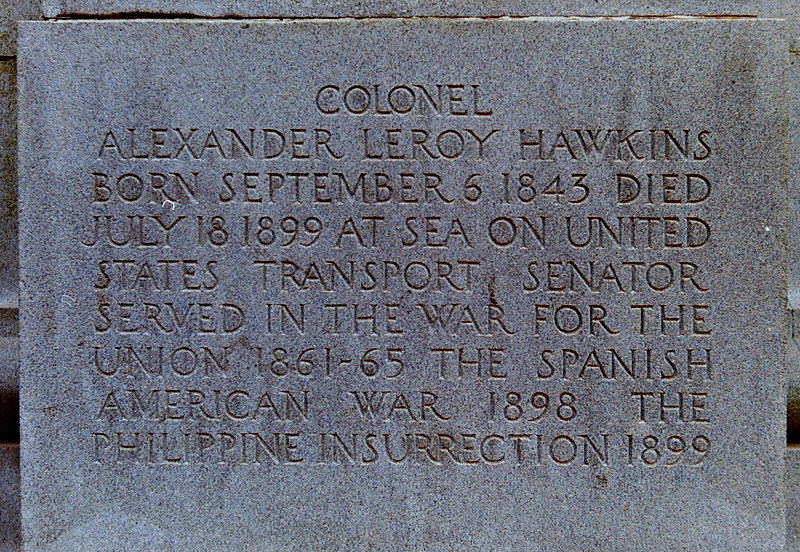
If you are a Pittsburgher, you have probably seen it many times, but you may not have paid it much attention.


It belongs to one of the atlantes—Atlas figures—on the Kaufmann’s clock.

This elaborate Gothic pulpit is equipped with a traditional sounding board to deflect the sound out into the congregation. It is also equipped with a microphone, which has become a much more tenacious tradition. An Episcopal church would sooner give up the Thirty-Nine Articles than the microphone. It is an interesting fact of history that no one ever heard anything until electrical amplification was invented.
Addendum: This pulpit was designed by Bertram Goodhue, the disciple of Ralph Adams Cram who was the architect of First Baptist in Oakland. It was installed in 1922.


West End Park is far off the beaten track, and few people outside its own neighborhood (which is technically Elliott, though it belongs at least as much to the West End) ever visit, or even know it exists. But it has one of our best war memorials by one of our best sculptors and one of our best architects.
The sculptor was Frank Vittor, who was already developing the streamlined style that would make him one of Pittsburgh’s two favorite sculptors (the other being Giuseppe Moretti). The architect was William Perry, whose most famous work is St. Bernard’s in Mount Lebanon, a church more magnificent than many cathedrals. Their collaboration produced a striking monument, simple but rich. Unfortunately some restoration has left it with two radically different colors of stone and concrete, which is not how it was meant to look, as we see in this picture from twenty-two years ago:

That picture shows us that the memorial has also lost some sort of bronze ornament on the bottom half of the shaft: we can see the shadow of what seems to have been a shield with double-headed axe set in a bronze band. (Addendum: The book Discovering Pittsburgh’s Sculpture, by Vernon Gay and Marilyn Evert, shows the ornament in place, with a bronze band all the way around the base. That book was published in 1983.)




Col. Hawkins was a state senator as well as a much-respected officer in the Spanish-American War, which America fought to free the Spanish colonies, and the ensuing Philippine insurrection, which America fought to keep her newly acquired colony. He died in 1899; this memorial was put up in 1904. Originally the base extended in an embracing curve, as we see in this old photograph from Historic Pittsburgh; the extensions were probably cut off when the approaches were built for the Panther Hollow Bridge.


In an earlier version of this article, Father Pitt had negligently typed “1894” instead of “1904” as the date of this memorial. It is harder than one thinks to cross the gap between centuries.

George W. Guthrie was mayor of Pittsburgh when the Keenan Building was put up in 1907, and here is his face among the terra-cotta decorations on the building, where he keeps company with other prominent men of Pittsburgh. Pittsburghers remember Guthrie as the mayor who finally engineered the successful conquest of Allegheny, so North Siders sometimes think of him the way Ukrainians think of Vladimir Putin. Perhaps his most important accomplishment, though, was clean city water that, for the first time, brought typhoid under control in Pittsburgh, where it had been a scourge for the first century and a half of the city’s existence.